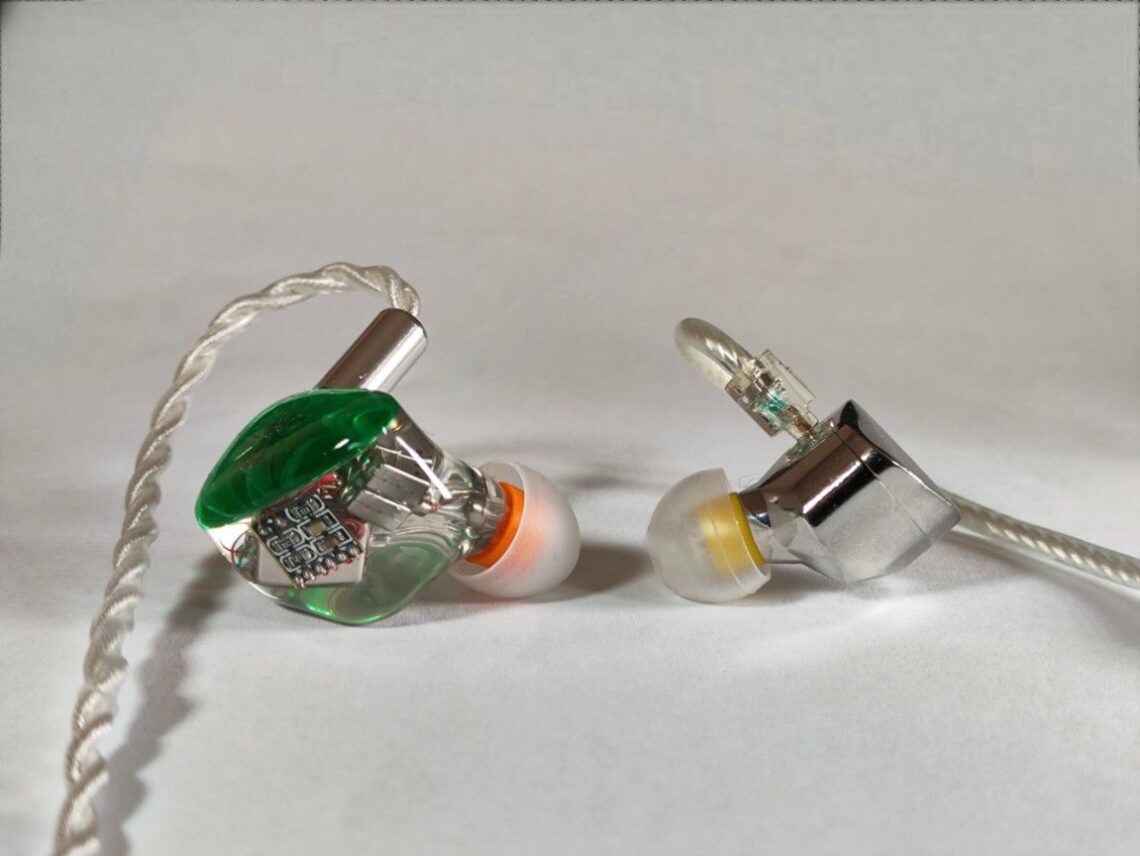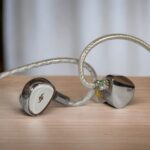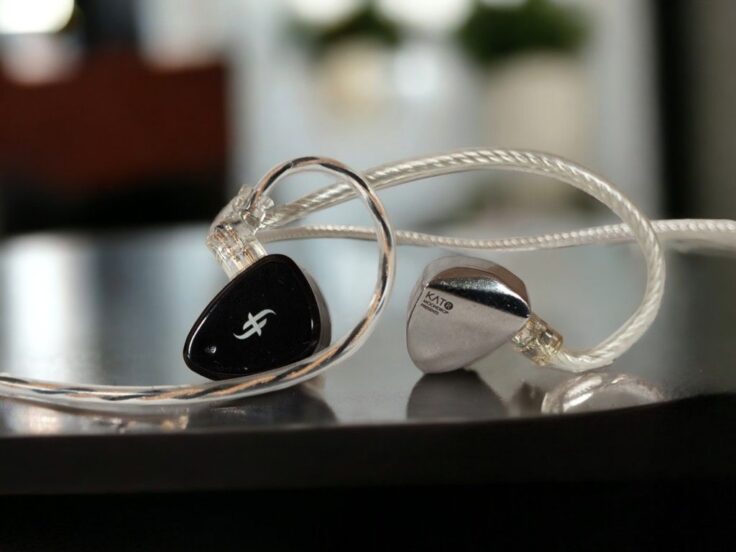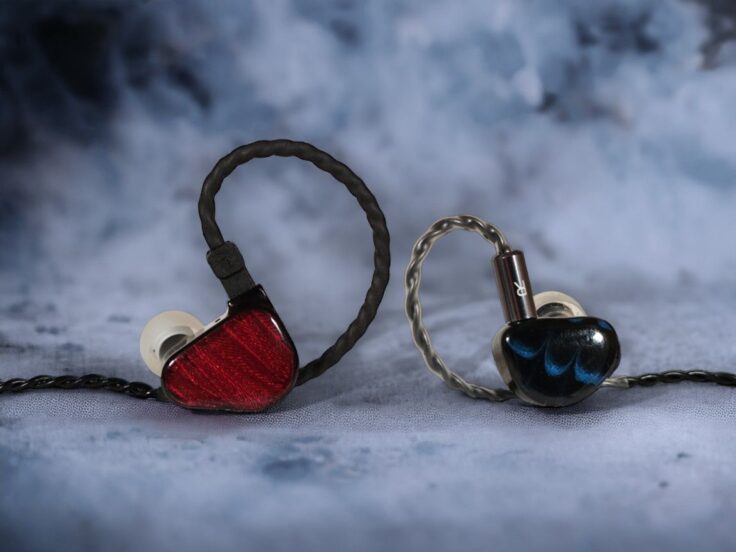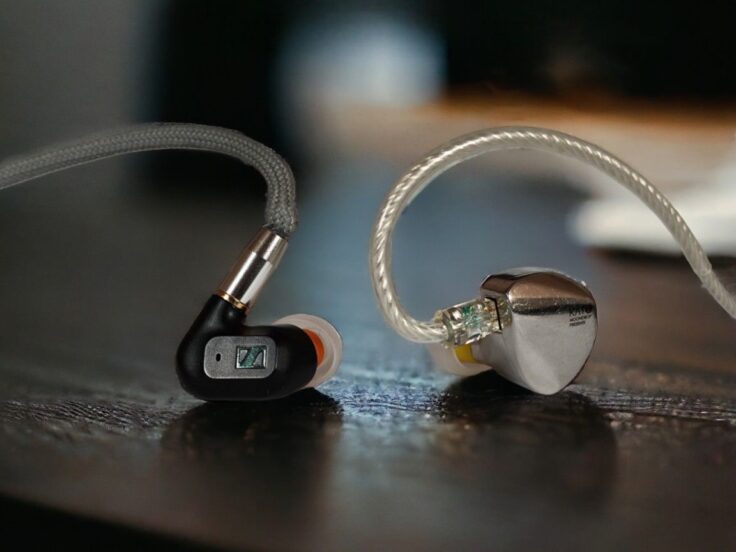The Moondrop Kato and the Kiwi Ears Orchestra Lite are two great IEMs at the +/- $200 price point. They have different tunings but are both relatively neutral in absolute terms.
The Kato’s elegantly designed brass all-metal body houses a single 10mm dynamic driver. It features a choice of two pairs of replaceable nozzles (steel and brass). They do not sound very different but the brass has a little bit more bass. In this review, however, I will stick to the steel nozzles.
For the Orchestra Lite, Kiwi Ears went with no less than 8 Balanced Armature drivers (BA): Two ultra tweeters for the treble, four midrange BA drivers for the mids, and two subwoofer BA drivers for the lows. The Orchestra Lite utilizes a three-way passive crossover. The housing is made of medical-grade resin.
My separate full reviews are found here:
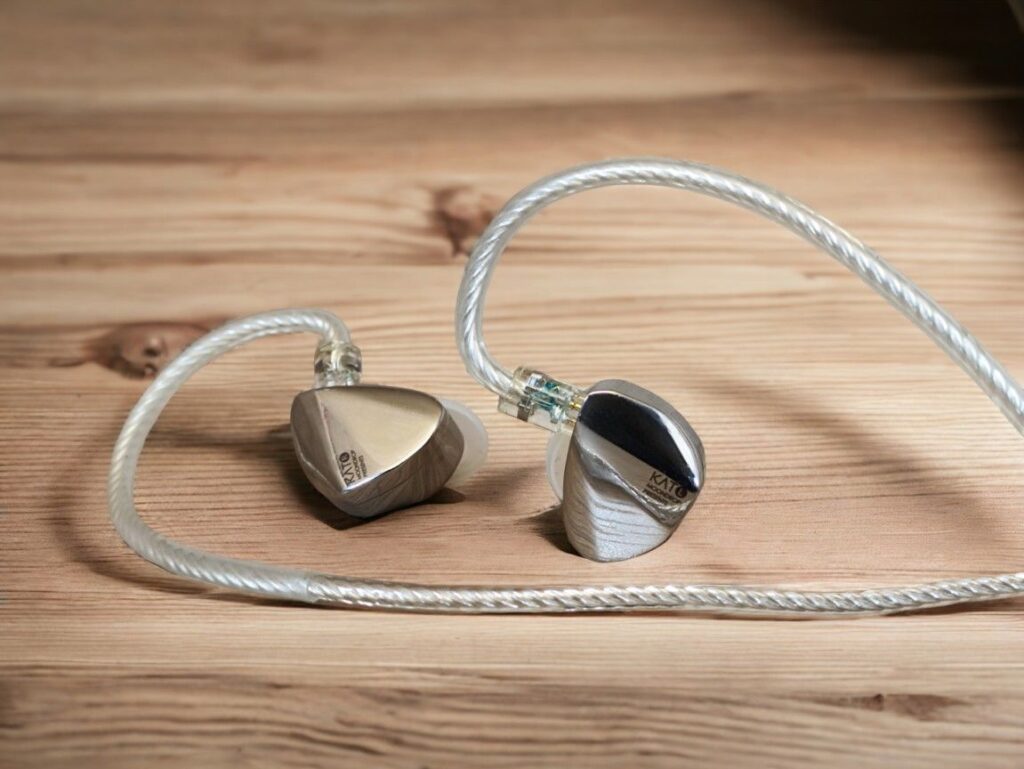
MOONDROP KATO SPECIFICATIONS
- Driver: Single 10mm-ULT dynamic driver
- Diaphragm: 3rd generation DLC composite diaphragm
- Impedance: 32Ω ±15%(@1KHz)
- Sensitivity: 123dB/Nrms (@1KHz)
- Detachable cable
- IEM cable socket: 0.78-2 Pin sunken design
- Cable termination plug: 3.5mm single-ended plug
- Frequency response range: 10Hz-45kHz
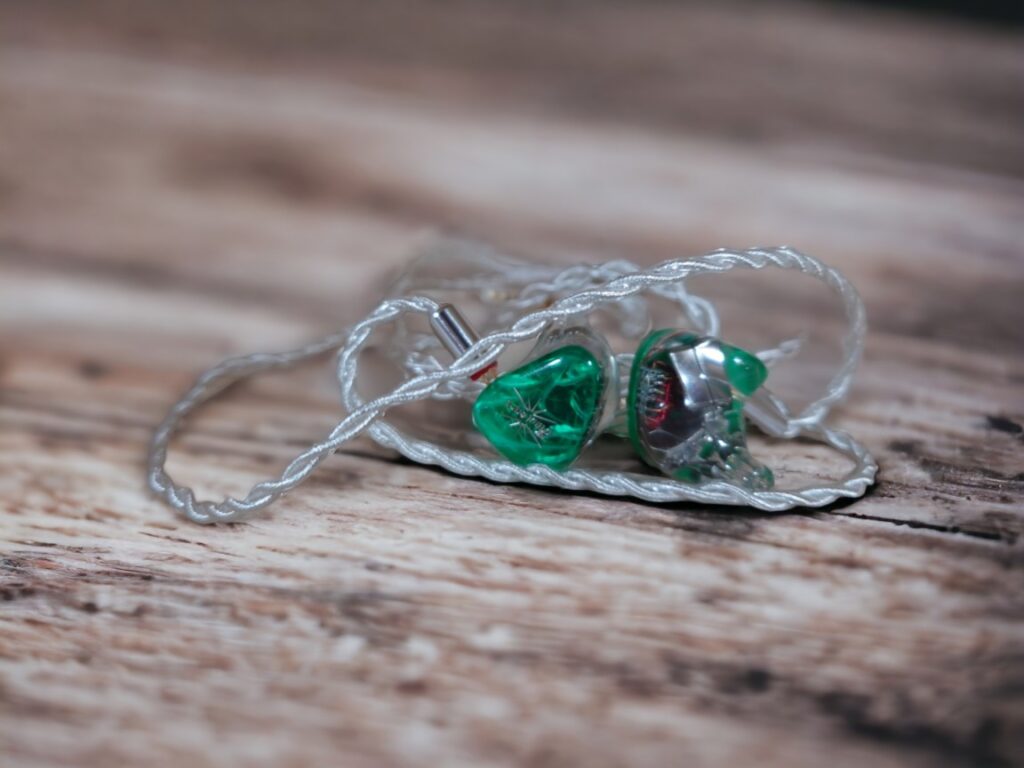
KIWI EARS ORCHESTRA LITE SPECIFICATIONS
- Drivers: Kiwi Ears Customized HI*2+Kiwi Ears Customized MID*4+Knowles LOW*2
- Impedance: 18 ohms
- Sensitivity: 112dB
- Detachable Cable: 1.2 m oxygen-free silver-plated copper
- IEM cable socket 0.78mm 2 Pin
- Cable termination plug 3.5mm single-ended
COMPARISONS
I used the Topping A90 desktop amp and the RME ADI-2 DAC FS as a source.
The Fall by Ministry
There’s loads of detail with the Orchestra Lite. In this track, a lot is going on, and my brain is almost having trouble following along. The presentation is somewhat bright.
The Kato offers a smoother presentation and more low-end quantity. There’s less explicit detail, but it’s more than enough. I prefer the Kato here.
Magnetic North by Todd Sickafoose
The Kato is very warm sounding with its full bass and smooth presentation. The bass is almost a bit too much.
There’s a lot less bass in the Orchestra Lite, which is totally fine. It’s rather preferable here. The mid-range and especially the guitar comes through the mix and takes centre stage.
Angel by Massive Attack
Lots of detail with the Orchestra Lite. It’s clear sounding with good separation. The bass is definitely there, but not exactly massive. It’s rather on the polite side but with good texture and decent punch. The vocals are nice and present.
As expected, the Kato has more bass. It’s darker sounding. Warmer and smoother. Vocals are more laid back and relaxed.
Chocolate Chip Trip by Tool
Some massive drums going on here. The Orchestra Lite kicks hard enough. It’s very tight and clean, yet a little bit smooth. Very enjoyable.
The Kato has a warmer and meatier presentation. There’s more low-end thump. It’s less crisp, with a little less detail and texture. It’s darker sounding.
Don’t Panic by Coldplay
With the Kato, the bass is quite dominant in the mix, but not overpowering. Chris Martin’s vocals are smooth and relaxed. Lots of nice detail.
The Orchestra Lite is very different. It’s very mid-centric, putting the vocals in the spotlight. The bass is a lot more on the polite side. There’s more upper mids energy, the presentation is brighter and crisper with more detail and texture.
Hellhound by Cassandra Wilson
With the Orchestra Lite, the vocals are smooth and crystal clear at the same time. The guitar is crisp and you can hear each string resonate.
With the Kato, there’s a much warmer and also darker presentation. The low-end is more dominant, the vocals are more laid back. It’s a nice presentation, but different. It’s smooth and delicious, but lacks some detail and clarity in comparison to the Orchestra Lite.
Terminal 7 by Tomasz Stanko Quintet
Very good sounding on both but they are quite different. There is a lot more bass presence with the Kato, the upper mids are clearer with the Orchestra Lite.
WRAPPING IT UP
Sound Signature
The Orchestra Lite has a less pronounced bass and more upper midrange energy, making it sound brighter and quite upfront. The Kato sounds neutral by itself but it has a slight U-shaped signature. I find them both to be neutral sounding but in different ways. Neither are extreme on the bass or too intense in the treble range.
Treble
Both have a nice well-balanced treble with good presence and detail. The Orchestra Lite comes off as a bit more articulate.
Midrange
They are quite different in the midrange. The Orchestra Lite is definitely more present in the upper midrange regions and this makes most mid-centric instruments sound brighter and often crisper and clearer. The Kato sounds warmer and darker, albeit a bit less detailed. Often I find it to sound more natural but both have a great midrange. However, if you prefer laid-back mids, the Orchestra Lite might not be for you.
Bass
There is no doubt that the Kato has a more prominent bass. There is more push and dynamics but the Orchestra Lite still has a good and well-defined bass.
Soundstage and Imaging
Even though they both have a good soundstage, the Orchestra Lite is more open-sounding. Regarding imaging, both are good but there are better options if you need extreme pinpoint precision.
Detail, Dynamics and Timbre
This is a little bit difficult because they are differently tuned, but at the same time have many of the same qualities.
Both are detailed sounding but in general, the Orchestra Lite comes off as slightly more so. With regards to macro-dynamics, the Orchestra Lite feels more dynamic in the midrange and treble but the bass is on the polite side.
When it comes to timbre they are both very good, but they are not the same. The tuning is relatively different. Both have a nice timbre. Generally, I do find the Kato to sound very natural and quite neutral, but when I have accustomed my brain to the sound signature of the Orchestra Lite, I could say the same about it too.
AMPLIFICATION
Both are equally easy to drive and work well with portable sources. They sound good directly from my POCO F5 phone’s 3.5mm jack, but they scale well with better sources.
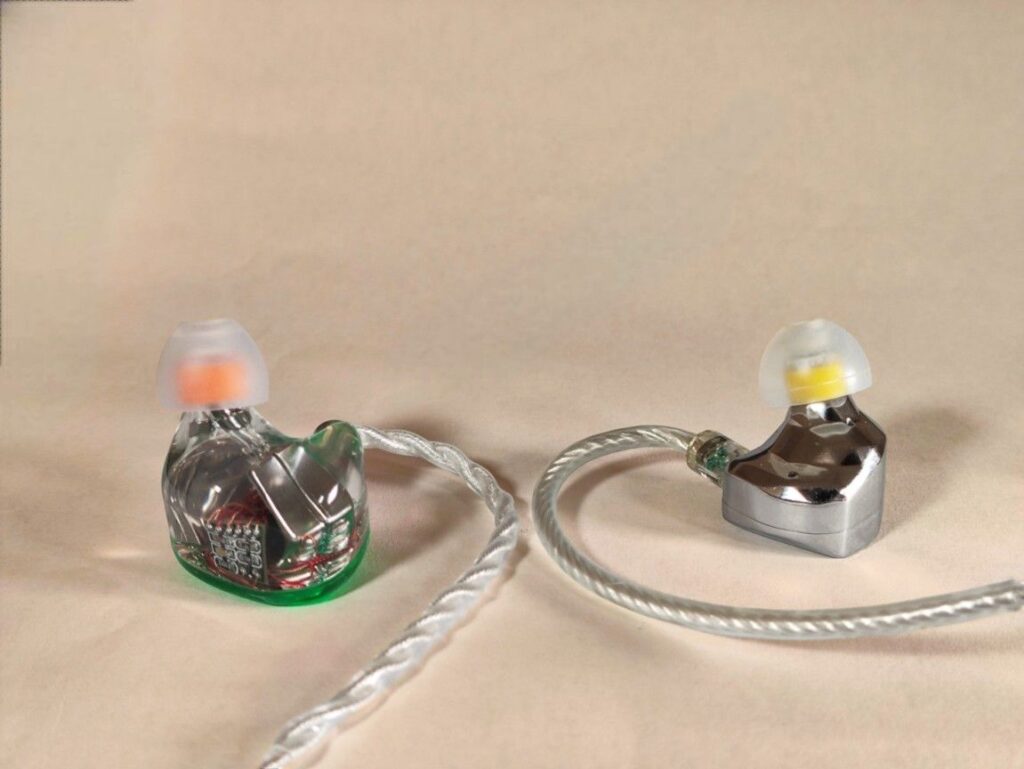
CONCLUSION
In terms of sound signature, the Kato is more V-shaped with a strimmer emphasis on the treble and the bass, whilst the Orchestra Lite is more neutral and lets the midrange take more space.
The soundstage is very wide with the Orchestra Lite, the Kato slightly more intimate. Imaging is similarly good.
The treble is quite pronounced with both. The midrange, however, is more different. The Orchestra Lite sounds brighter and has more energy in the upper mids. The Kato is a bit warmer and lusher.
The bass is definitely more prominent with the Kato. It has more energy and slam. Sometimes it’s too much, sometimes the Orchestra Lite is a little lean.
When it comes to detail, the Orchestra Lite tends to deliver more of it across the frequency spectrum. It is more articulate and has better micro-dynamics. It’s got better macro-dynamics in the mids and highs, the Kato is more dynamic in bass.
Buy on Linsoul: Moondrop Kato
Buy on Amazon: Moondrop Kato
Buy on Linsoul: Kiwi Orchestra Lite
Buy on Amazon: Kiwi Orchestra Lite
We make earnings through affiliate links and any purchase you make on Amazon or Linsoul clicking one of our links will give us a small provision at no cost to you.
We only get a provision for items that are not returned, so there’s no incentive for us to recommend something that’s not good.
Linsoul : Headphones, Earbuds, Wireless Earbuds, Desktop DAC/AMP, Portable DAC/AMP, Digital Audio Players,
Amazon: Headphones, IEMs, Headphone Amplifiers, Home Audio or Anything else.
.
If you enjoyed this article or other content on The Headphoneer, you might consider leaving a small donation to keep this website up and running. No donation is too small. Thanks for supporting us!
If you like our work please follow us on Instagram, Facebook and Twitter , it will help us grow. Sharing is caring 🙂


